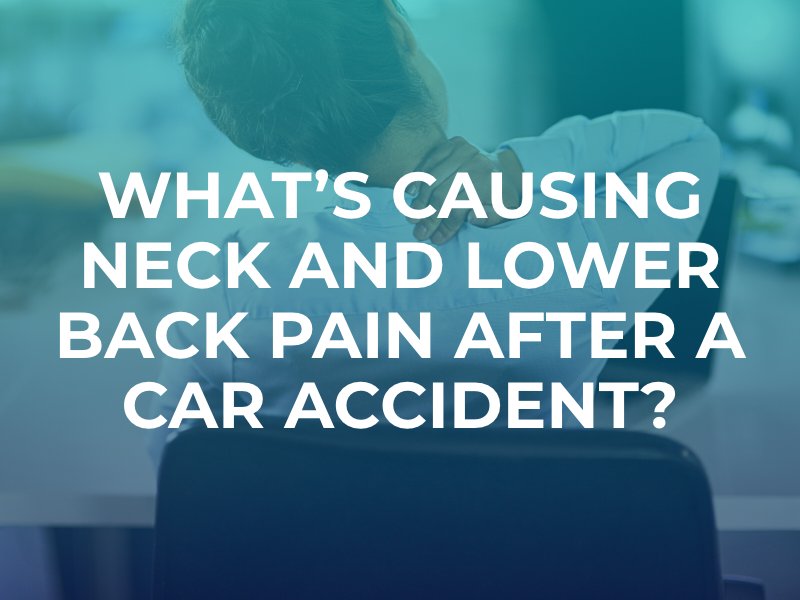What Causes Neck and Lower Back Pain After a Car Accident?
Vehicle accidents often result in drivers and passengers sustaining some type of injury. In many cases, vehicle accidents are seen as relatively minor, and sometimes those involved do not feel any pain in the immediate aftermath of the incident. However, the very nature of a vehicle impact often means that passengers’ bodies experience exertional forces that can lead to various types of neck and lower back pain. Here, we want to discuss what causes neck and lower back pain after an accident. Sometimes, the pain associated with these injuries does not appear until hours, days, or even weeks after a crash occurs.

Car Accidents are Traumatic Events
When examining vehicle accidents, we have to take physics into account. The reality is that most accidents involve vehicles that weigh thousands of pounds slamming into one another. Even at lower speeds, this can result in tremendous forces being exerted throughout the vehicle and into the bodies of those inside. Not only do we have to be concerned about these forces going directly into drivers and passengers, but we also have to consider the dramatic acceleration and deceleration that the body goes through when a collision occurs.
In summary, vehicle collisions can lead to a body sustaining a direct impact and also cause the body to undergo a whiplash effect. These forces are the leading contributors to neck and lower back pain after a car accident.
The Spine and Soft Tissues can Sustain Damage
Neck and back pain following an accident could very likely be caused by trauma to the spine. Our spines extend from the base of our skulls all the way to the lower portion of our bodies. The mechanisms of a car accident can certainly affect every part of the spine.
The most common injury associated with vehicle accidents, particularly fender benders, is whiplash. This type of injury can occur when the head is forcefully and quickly thrown backward and forward due to the force of a collision. This whipping motion can injure the bones in the spine. Additionally, whiplash can injure the discs between bones in the spine as well as muscles, ligaments, nerves, and other soft tissues in the neck area. Often, the signs and symptoms of whiplash do not appear until long after a collision occurs.
Injuries to the lower back are not uncommon when a car accident occurs. These injuries can occur in a variety of ways, and they often include the following:
- Disk damage. Lower back pain is often caused by spinal cord discs becoming damaged as a result of a car accident. Discogenic pain can affect any part of the spine, but the lumbar spine (the lower back) is particularly vulnerable to these types of injuries.
- Lumbar sprains. A lumbar sprain occurs anytime the ligaments of the back are stretched or torn. This is not an uncommon result of a vehicle accident.
- Spinal stenosis. This can occur when the bone channel that holds up the spinal cord and nerves begins to narrow. This is usually a gradual condition, but it can also occur after severe trauma caused by a car accident.
- Disc herniation. This can occur when the inner filing of the discs of our spine protrudes through the outer layer. The herniation or rupture of a disc is typically not painful in and of itself, but when the protruding material comes in contact with spinal nerves, this can lead to severe pain.
It is recommended that vehicle accident victims seek medical care immediately following the incident. A trained physician needs to conduct a full evaluation of a vehicle accident victim in order to diagnose neck and lower back pain and begin immediate medical intervention.